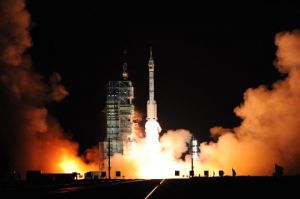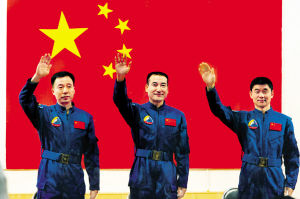Difference between revisions of "Shenzhou VII"
From Wiki China org cn
imported>Ciic m |
imported>Ciic m |
||
| Line 1: | Line 1: | ||
| − | + | On September 25, [[2008]], around 9:10 pm, [[China]]'s third domestically produced manned spacecraft, the Shenzhou VII, was launched via the Long March II F rocket at [[Jiuquan Satellite Launch Center]]. | |
| − | |||
| − | |||
| − | |||
[[category:space]] | [[category:space]] | ||
[[category:spacecraft]] | [[category:spacecraft]] | ||
| + | [[File:shenzhou.jpg|thumb|300px|This photo shows Shenzhou VII spacecraft, carried by Long March rocket, blast into space.]] | ||
| + | [[File:shenzhou7.jpg|thumb|300px|Taikonauts aboard the Shenzhou VII spacecraft: (from left to right) Jing Haipeng, Zhai Zhigang and Liu Boming]] | ||
Latest revision as of 06:41, 25 September 2009
On September 25, 2008, around 9:10 pm, China's third domestically produced manned spacecraft, the Shenzhou VII, was launched via the Long March II F rocket at Jiuquan Satellite Launch Center.

